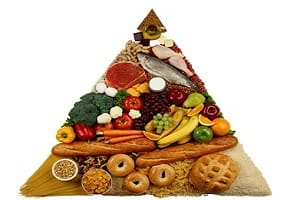Food for Thought: Childhood Obesity
Published: September 07, 2016l
By Ilaria St. Florian, MS, RD
Help Us Build Healthy Families
If you're interested in learning more, please contact KIDS’ FANS Manager, Ilaria St. Florian.
It's time to raise awareness about how we as individuals and a community can take steps to improve the quality of children’s diets and increase their access to daily physical activity.
We have all heard about the obesity epidemic in the U.S. and seen portion sizes become super-sized as waist bands expand. But it does give pause to think that one in three American children are overweight or obese. The fact is, children who are obese are more likely to be obese as adults and obesity is a risk factor for developing diabetes, hypertension, hyperlipidemia and certain cancers.
Research shows that the development of childhood obesity is multi-factorial. Risk factors include having obese parents, being inactive, having poor sleep habits and living in a food insecure household with limited access to healthy foods, yet often regular exposure to calorie-dense, low-cost, processed foods.
The reality is that a child can look overweight but still be hungry and nutrient deficient as a result of eating too many poor quality, high calorie foods. This is referred to as the hunger-obesity paradox. More than one in five children in the U.S. live in food-insecure households, which is when a family's income is insufficient to ensure reliable access to nutritious foods.
The good news is that we can make a difference to reduce childhood obesity with small steps that involve support from families, schools and the community to ensure best results.
Here's some food-for-thought to get started:
- Keep healthy snacks, such as fresh fruit and chopped vegetables, within easy reach.
- Limit high calorie foods that have too much added sugars and fat. These are “sometimes” foods, thus meant to be eaten in moderation and not every day.
- Offer fruits and vegetables with every meal, studies show that regular exposure leads to food acceptance.
- Opt for lean proteins (grilled skinless chicken in place of fried chicken), whole grains (whole wheat instead of white bread) and low-fat dairy as much as possible.
- Offer meals and snacks at set times to avoid that kids “graze” all day
- Model healthy eating behavior! Kids are more likely to make healthy food choices if they see their parents or caregivers doing the same.
- Provide water and low-fat milk instead of sugar-sweetened beverages.
- Limit all screen time to 2 hours per day, excluding time needed for school work. The American Academy of Pediatrics doesn’t recommend TV for kids age 2 or younger.
- Ensure that kids get 60 minutes of physical activity per day. Keep in mind that this can be broken up in to 20 minute increments and that you don’t have to be an athlete or be on a spots team to be physically active. Not only is physical activity good for conditioning, it also reduces stress and anxiety and increases self-esteem.
- Ensure kids get adequate sleep at night. School age kids (ages 6 – 13) need 9 to 11 hours of sleep a night.
- Learn how to shop on a budget. Tips include: plan ahead and write a shopping list, buy generic brands, compare unit prices, buy sale items and local foods which are usually cheaper.
- Get involved with school wellness committees or contact school administrators to ensure that kids are offered healthy meals and daily physical activity while in school.
Featured Expert/ Author































































